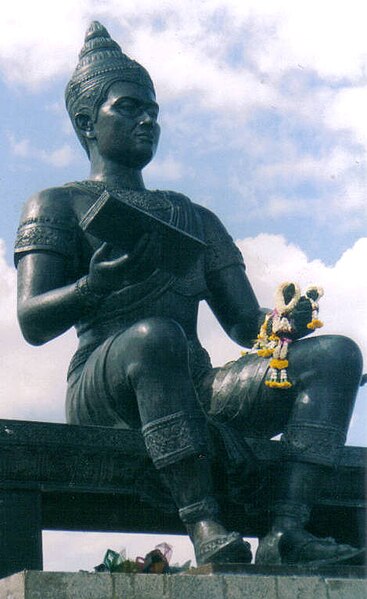Pagina 1 van 1
leesrichting in thai
Geplaatst: donderdag 06 augustus 2009, 15:02
door Jim
chang, mogen we hier een 'thais leren' categorie?

ik heb deze week m'n eerste stapjes gezet om het thaise schrift te leren, maar ik zit met een probleem.
สาม lees je gewoon netjes van links naar rechts, maar waarom lees je ไม่ van rechts naar links?
Re: leesrichting in thai
Geplaatst: donderdag 06 augustus 2009, 18:53
door Jim
nevermind, 'k heb 't al gevonden.
Thailand has its own unique alphabet. It isn't known where the script comes from, but it is around 800 years old and may be based on the Mon, or the Khmer writing systems. It is read from left to right, but many of the vowels are written before their consonant and others are made up from a combination of characters around the consonant.
Re: leesrichting in thai
Geplaatst: maandag 10 augustus 2009, 05:34
door jumbo
Jim schreef:nevermind, 'k heb 't al gevonden.
Thailand has its own unique alphabet. It isn't known where the script comes from, but it is around 800 years old and may be based on the Mon, or the Khmer writing systems. It is read from left to right, but many of the vowels are written before their consonant and others are made up from a combination of characters around the consonant.
Ik heb altijd begrepen dat Thai is ontwikkeld door een persoon, ik dacht een royal maar weet dat niet zeker, dus het zou dan wel bekend moeten zijn waar het vandaan komt, want het weinig zin een taal te ontwikkelen als het schrift al bestaat.... lijkt mij
Re: leesrichting in thai
Geplaatst: maandag 10 augustus 2009, 07:33
door Pieter
jumbo schreef:
Ik heb altijd begrepen dat Thai is ontwikkeld door een persoon, ik dacht een royal maar weet dat niet zeker, dus het zou dan wel bekend moeten zijn waar het vandaan komt, want het weinig zin een taal te ontwikkelen als het schrift al bestaat.... lijkt mij
het is in 1283 ontwikkelt door deze persoon:

Ram khamhaeng de grote dus (aldus sprak wikipedia)
wat waarschijnlijk flauwekul is
wikipedia (engels schreef:
This stone was allegedly discovered in 1833 by King Mongkut (then still a monk) in the Wat Mahathat. It should be noted that the authenticity of the stone – or at least portions of it – has been brought into question.[3] Piriya Krairiksh, an academic at the Thai Khadi Research institute, notes that the stele's treatment of vowels suggests that its creators had been influenced by European alphabet systems; thus, he concludes that the stele was fabricated by someone during the reign of Rama IV himself, or shortly before. The matter is very controversial, since if the stone is in fact a fabrication, the entire history of the period will have to be re-written.[4]
Scholars are still divided over the issue about the stele's authenticity.[5] It remains an anomaly amongst contemporary writings, and in fact no other source refers to King Ramkhamhaeng by name. Some authors claim the inscription was completely a 19th-century fabrication, some claim that the first 17 lines are genuine, some that the inscription was fabricated by King Lithai (a later Sukhothai king), and some scholars still hold to the idea of the inscription's authenticity.[6] The inscription and its image of a Sukhothai utopia remains central to Thai nationalism, and the suggestion that it may have been faked in the 1800s caused Michael Wright, a British scholar, to be threatened with deportation under Thailand's lese majeste laws
Als je dat hardop beweerd wordt je misschien het land uitgeflikkerd.


Nee geschiedenis en thaien is nog steeds niet aan elkaar besteed dus stelling van vandaag:
Thailand is nooit door een koloniale macht overheerst (behalve de jappen maar dat is dus ook weer niet zo)
omdat niemand dit land wou hebben



Pieter


Re: leesrichting in thai
Geplaatst: maandag 10 augustus 2009, 08:31
door carpediem
En ook nog Chantaburi een tijdje:
Chantaburi bestaat voornamelijk uit heuvelland. De provincie is aan het einde van de 19e eeuw een tijdlang door Frankrijk bezet als straf omdat Thailand weigerde delen van Laos en Cambodja af te staan. Dit uit zich nog in de vele voorbeelden van Franse architectuur in deze provincie.
Wikpedia

